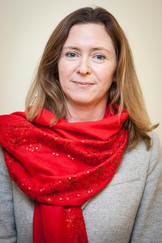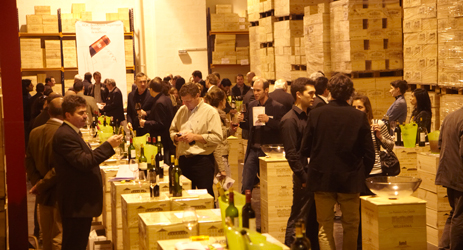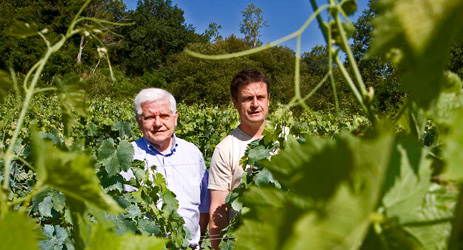The recipe for a fake Chateau Lafitte [sic], according to French oenology professor Joseph-Francois Audibert, is perfectly simple:
25 litres of old white wine from dried grapes (ideally Muscat of Alexandria)
70 litres of Roussillon red wine
2 litres of walnut liqueur
2 litres of almond shell infusion
5 centilitres of ‘Grands Vins de Bordeaux’ aroma (available by special purchase in containers of 100 litres)

Before you rush out to get the ingredients, I should mention that Audibert was writing his recipe in the 1890s, at a time when Phylloxera had decimated the vineyards of France, and making ‘imitation wines’ was seen as a perfectly acceptable way to deal with the problem of low stocks of the real thing. He was writing in a book called Les Vins d’Imitation which by 1896 was already on its 10th edition and which offered detailed recipes for madeira, sherry, vermouth, bitters, liqueurs and a vast array of wines including Tavel, Bourgogne Chambertin, Macon, Cassis white, ‘ordinary Bordeaux’ and ‘Bordeaux Chateau Lafitte’.
He might be surprised to hear that today, 120 years later, he would be hauled before the courts for inciting similar behaviour. Forging of wines is a subject that just doesn’t away, and is in the spotlight more than ever this year with two high profile court cases in the US; the first with collector William Koch suing Eric Greenberg US$300,000 for allegedly selling forged bottles in 2007, and the second due to begin later this year with the criminal trial of alleged master forger Rudy Kurniawan. One clear result is the increase in paranoia and suspicion – as seen when several bottles of La Tache were questioned during the recent sale of Henry Tang’s wines in Hong Kong.
The subject has for some time been felt most keenly in Bordeaux, and in mainland China. So I was particularly interested to meet this week Céline Baillet, a European Trademark lawyer at the Bordeaux office of INLEX, a law firm specialised in the protection and defence of trademarks.
‘We work with wineries in most countries around the world,’ says Baillet. ‘But it’s fair to say that the majority of our requests right now are for help within China.’
Baillet’s offices are in a leafy corner of Bordeaux near the city’s Jardin Public central park. Located in an attractive 19th century townhouse on a residential street, the company is at the very centre of the fight against forgeries – advising the European Union on the text of bilateral agreements between France and China, and working with all the main local players, from wine syndicates such as Saint Emilion to marketing association such as the Council of 1855 Grand Cru Classés, and the main Bordeaux Wine Bureau, the CIVB. Aside from these bodies, their clients number over 200 individual chateaux, who range from small producers selling their wine for €5 a bottle up to prestigious classified estates whose wine retails at over €500.
The firm’s work in China, Baillet relates, really exploded back in 2007 and 2008. Today one bottle in every ten that leaves Bordeaux ends up in China, and it is the region’s largest export market by both volume and value. But the issues with forgeries have been as well documented as the successes - one Bordeaux wine merchant, Castel, has said it had 188 legal cases underway in China during 2012, with three successful prosecutions to date.
On October 31, 2012, China’s new government introduced a raft of measures aimed at tightening the protection against counterfeiting. Thomas Jullien, the CIVB’s representative in Asia, exchanges information with INLEX (they also have a series of partnerships with specialist Chinese law firms) and is on the ground in China influencing developments at first hand.
He is cautiously positive about progress. ‘From a legal standpoint, Bordeaux scored a goal last year, becoming the first French appellation to obtain the Geographical Indication (GI) registration from the State Administration for Industry and Commerce, providing additional enforcement resources and efficient means to address legal issues in China.’
This is one of two procedures available for protection of geographic indications in China, and is effectively a recognition of a collective mark through the Chinese trademark office. They are still waiting for Bordeaux to receive the State Administration for Quality Supervision Inspection and Quarantine (AQSIQ) recognition that Napa Valley was granted last year - but this is an encouraging start.
‘The majority of our work is not to do with physical forgeries of wine however,’ Baillet adds. ‘The niche problem in China, and it’s something that is very specific to this particular market, is brand-squatting – so registering somebody else’s trademark, in the hope of selling it back to them at a later date. The law currently recognises the person who registers a brand, regardless of prior trading, so an importer will not distribute a chateau whose brand is registered to someone else. This means the winemaker is effectively blocked any entry to the Chinese market until they recover the rights to their name’.
The perpetrator is often just one guy who owns a small IT company with a few staff. ‘A typical case would be someone who has registered perhaps 300 Bordeaux chateaux names,’ says Baillet. ‘He just needs to sell back two or three of them to make it worthwhile. He has no intention of physically forging the wines, it is little more than a hobby.’ The figures involved are relatively small. It costs around €1000 to register your trademark in China for 10 years of protection, and perhaps between €8000 and €30,000 to buy it back from a brand-squatter.
‘Unfortunately,’ her colleague Jean-Baptiste Thial de Bordenave adds, ‘most winemakers come to see us too late, after they have uncovered a problem. In China, unlike any other country that we work with, it is really essential to register your trademark before you start importing your wine into the country – as early as your very first meetings with potential importers.’
Bordenave worked for a law firm in the Napa Valley and in the trade protection of Cognac, before returning to Bordeaux to join INLEX. His family are small winemakers who are taking their own first steps into China - under his guidance.
‘Full-blown legal actions are rare, because only the most prestigious chateaux can afford it,' says Bordenave. 'But when we manage to buy back a brand name for a small estate, and they can suddenly get access to the potential of the Chinese market, it’s very satisfying. Because this is still a market where the opportunities outweigh the risks.'
Translated by Sylvia Wu / 吴嘉溦
All rights reserved by Future plc. No part of this publication may be reproduced, distributed or transmitted in any form or by any means without the prior written permission of Decanter.
Only Official Media Partners (see About us) of DecanterChina.com may republish part of the content from the site without prior permission under strict Terms & Conditions. Contact china@decanter.com to learn about how to become an Official Media Partner of DecanterChina.com.












Comments
Submit